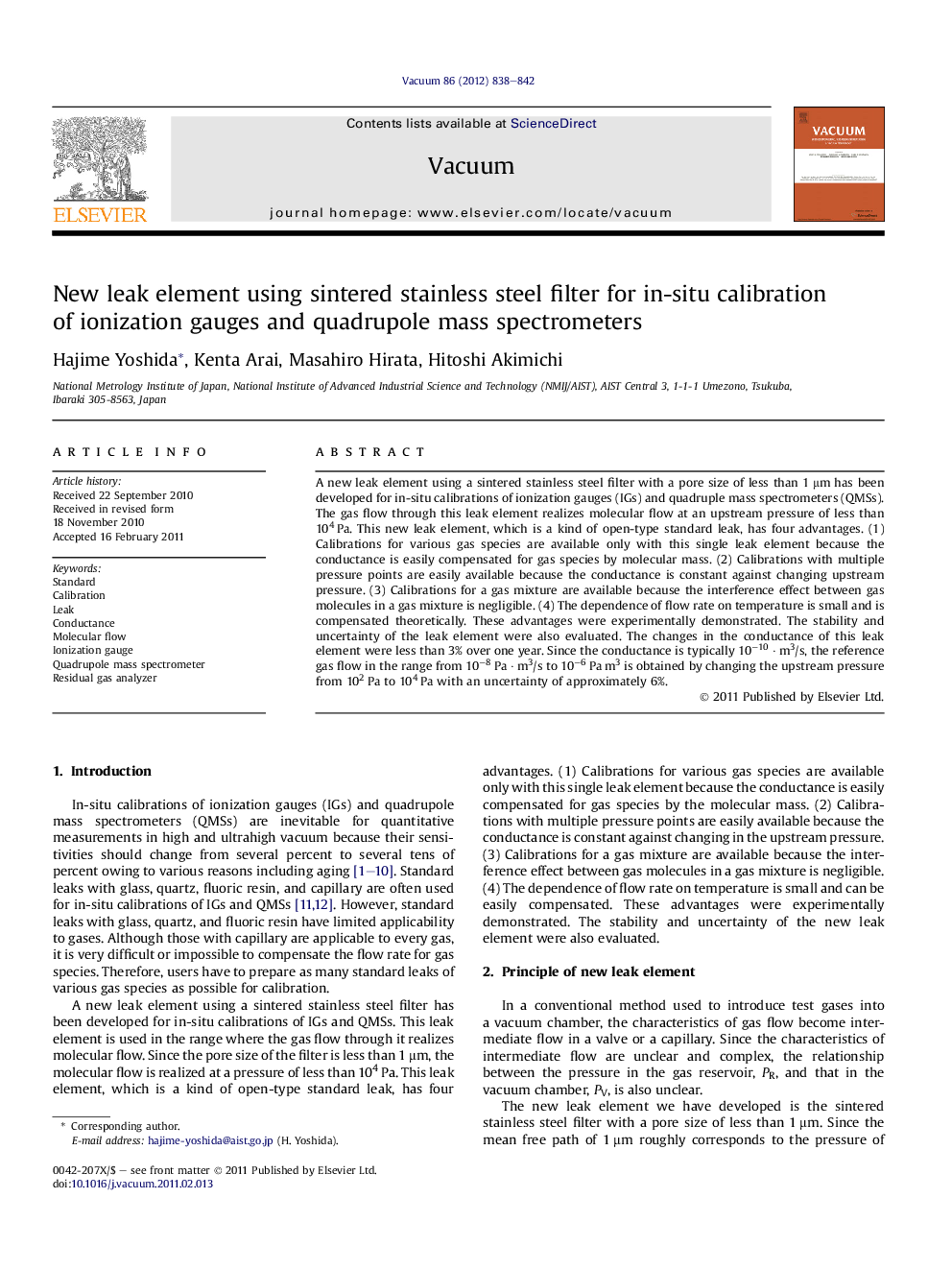| Article ID | Journal | Published Year | Pages | File Type |
|---|---|---|---|---|
| 1690511 | Vacuum | 2012 | 5 Pages |
A new leak element using a sintered stainless steel filter with a pore size of less than 1 μm has been developed for in-situ calibrations of ionization gauges (IGs) and quadruple mass spectrometers (QMSs). The gas flow through this leak element realizes molecular flow at an upstream pressure of less than 104 Pa. This new leak element, which is a kind of open-type standard leak, has four advantages. (1) Calibrations for various gas species are available only with this single leak element because the conductance is easily compensated for gas species by molecular mass. (2) Calibrations with multiple pressure points are easily available because the conductance is constant against changing upstream pressure. (3) Calibrations for a gas mixture are available because the interference effect between gas molecules in a gas mixture is negligible. (4) The dependence of flow rate on temperature is small and is compensated theoretically. These advantages were experimentally demonstrated. The stability and uncertainty of the leak element were also evaluated. The changes in the conductance of this leak element were less than 3% over one year. Since the conductance is typically 10−10 · m3/s, the reference gas flow in the range from 10−8 Pa · m3/s to 10−6 Pa m3 is obtained by changing the upstream pressure from 102 Pa to 104 Pa with an uncertainty of approximately 6%.
► A new leak element has been developed for in-situ calibration of ionization gauges and quadrupole mass spectrometers. ► Since the gas flow through this leak element realizes molecular flow at an upstream pressure of less than 104 Pa, this new leak element, which is a kind of open-type standard leak, has four advantages. ► The stability and uncertainty of the leak element were also evaluated. ► Since the conductance is typically 10−10·m3/s, the reference gas flow in the range from 10−8 Pa·m3/s to 10−6 Pa·m3 is obtained by changing the upstream pressure from 102 Pa to 104 Pa with an uncertainty of approximately 6%.
